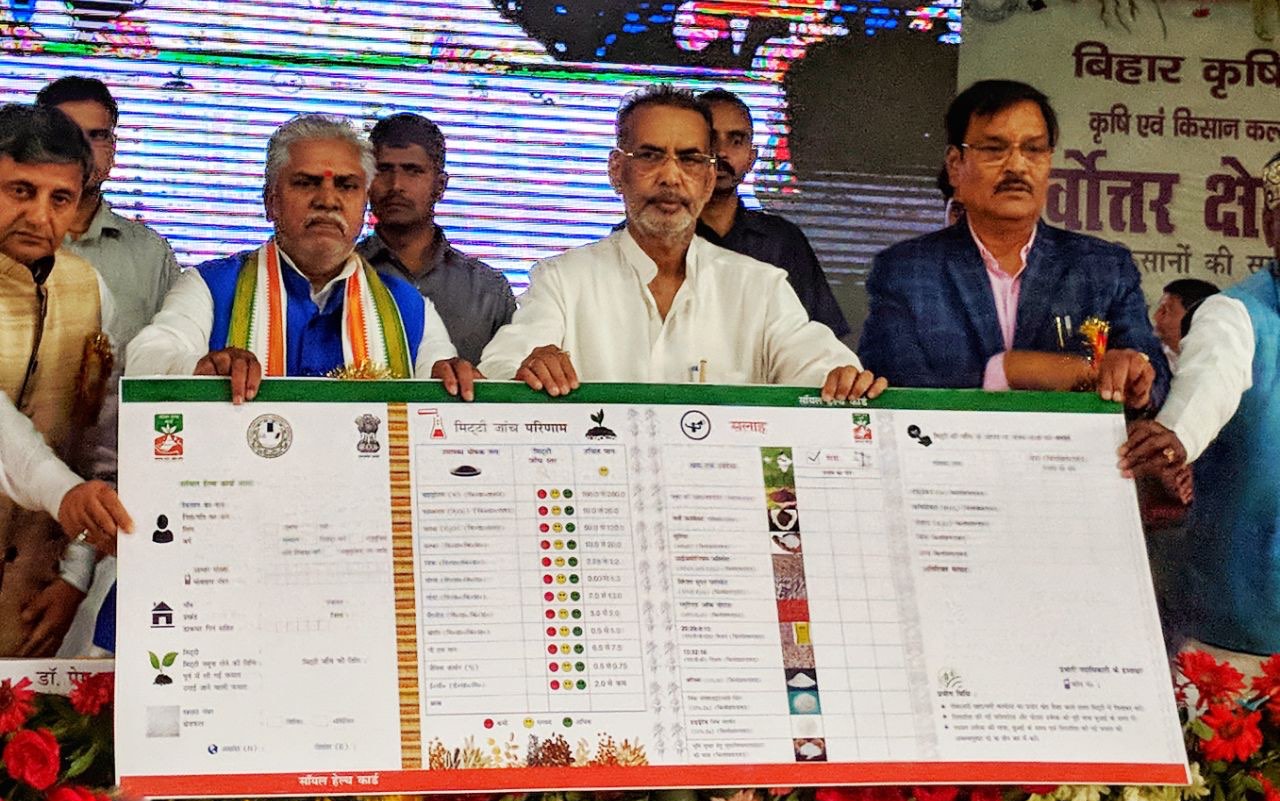India’s Ministry of Agriculture is currently implementing an $86 million Soil Health Card (SHC) Scheme to provide nutrient recommendations to farmers based on local soil health tests, with the expectation that it will promote balanced nutrient management practices. Launched in 2015, the program provides SHCs to every farmer at two-year intervals. The cards contain soil test results and crop-wise recommendations of nutrients and fertilizers to help improve productivity through judicious use of inputs.
About 100 million cards have been distributed to farmers across the country, and that number continues to rise. But many farmers say the cards would be much more effective if better designed and composed.
Do farmers understand these cards?
In 2017, researchers with the Cereal Systems Initiative for South Asia (CSISA) convened 21 focus group discussions with more than 100 farmers in Bihar and Odisha to determine whether farmers were able to understand the cards, trust them to provide accurate information, and change their practices based on the cards’ recommendations. Farmers in these areas were also surveyed and five key informants interviewed.
The focus groups revealed several basic problems that made the SHC hard to understand and follow, even for the most well-read respondents (most of whom had studied at least until the fifth grade and one of whom was an MBA) in our sample. Many complained the cards were poorly designed and not user-friendly. The information they contained was too technical, more relevant for scientists than for farmers. They also lacked relatable visuals and contained too much text in small print, making it difficult to pick out the relevant information.
Too scientific
Many respondents were not familiar with all nutrients and micronutrients listed on the cards. For example, farmers are expected read a table with their soil’s pH, EC (electrical conductivity) and OC (organic carbon) content—all three of which were unintelligible to many farmers in the local language. With a little probing and assisted reading, some farmers could follow and identify the nutrients listed on the SHCs, albeit with local reference terms.
In both states surveyed, we found a mix of cards in English, Hindi, and Oriya languages and where there were translations, they were mostly phonetic translations of English words. For example, “pH” was represented as an “f” sound in the local language. Literal translations of some of the most common nutrients were also confusing. Some farmers could infer meanings with prompting, and some were able to read recommended values of nutrients if these were explained. For those who could not read, it is a different story altogether.
Not more than a handful of farmers in our sample understood the recommendations for input application, which listed the names of individual chemical nutrients rather than formulated fertilizers. This is potentially risky for farmers who may end up choosing the wrong input.
Not from my field!
Farmers also complained that the card test results—from single samples in grid squares of 2.5 hectares for irrigated areas and 10 hectares for rainfed areas—were not site-specific to their fields, undermining trust in the program’s recommendations. When the values were in the range of their existing practices, recommendations were perceived as correct. But when the values were different from their expectations or practices (particularly in Odisha, where the urea recommendations were almost twice the present application rates in the villages we went to), the immediate response was to discard the recommendations, ostensibly because soil samples were not taken from their own fields.
A Soil Health Card redesign
If farmers do not understand the content, the program adds little value. So with the help of development communications specialists, we redesigned the SHCs to simplify and clarify the contents and make them more understandable to farmers.
Illustrations help to overcome language barriers, and hence should be the focus of a scheme that aims to reach out to the masses. We added several illustrations, including pictures of fertilizer blends. We also reduced the total amount of text and increased font sizes, and used symbols to represent levels (low, medium and high).
These new designs were retested in two rounds in Bihar in coordination with the Bihar Agricultural University (BAU), Sabour. Several iterations of the new designs were made to test for the optimal colors and symbol designs. A final design that farmers found attractive and easy to understand was submitted to the BAU for all their SHC work moving ahead. This new design was also launched by the Union Minister of Agriculture, Shri Radha Mohan Singh, on Feb. 24.
BAU will distribute these new cards to several hundred farmers. We plan to undertake an assessment of the recipients’ experiences with them, including their interpretability and eventual impacts on nutrient application behavior. Further research and more concrete evidence on the usability of these redesigned SHCs will help inform policy makers of potential changes in the national Soil Health program to encourage greater adoption.
Vartika Singh is a Project Manager in IFPRI’s Environment and Production Technology Division; Sujata Ganguly is Research Consultant with the International Maize and Wheat Improvement Center (CIMMYT). This post first appeared on the IFPRI South Asia Office blog.







